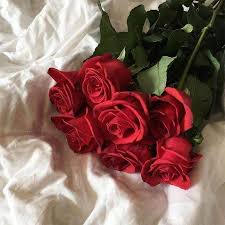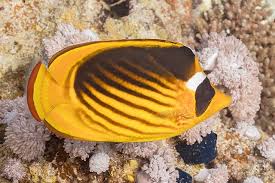In the realm of fragrance creation, there exists a time-honored tradition of crafting exquisite rose perfumes by hand, using the delicate petals of Rosa gallica as the primary ingredient. In this section, we delve into the intricate process of artisanal rose perfume making, exploring the steps, techniques, and artistry involved in transforming the essence of Rosa gallica into captivating fragrances.

Harvesting and Selecting Rosa Gallica Petals: Capturing Nature’s Essence
- Seasonal Harvest: The process begins with the careful selection and harvesting of Rosa gallica petals at the peak of their bloom, typically during the early morning hours when the fragrance concentration is highest. Harvesting is often done by hand to ensure gentle handling and minimal damage to the delicate petals.
- Quality Assessment: Only the finest, fully developed petals are selected for perfume making, as their aroma and oil content contribute to the fragrance’s complexity and longevity. Petals are inspected for color, fragrance intensity, and overall freshness, with any blemished or damaged petals discarded to maintain the perfume’s quality and purity.
Extraction of Rose Essence: Capturing the Essence of Rosa Gallica
- Steam Distillation: The most common method of extracting rose essence from Rosa gallica petals is through steam distillation. Petals are placed in a distillation vessel along with water, and steam is passed through the mixture to release the aromatic compounds present in the petals. The steam carrying the rose essence is then condensed and collected, yielding a fragrant rose hydrosol and essential oil.
- Cold-Press Extraction: Another method used for extracting rose essence is cold-press extraction, which involves pressing Rosa gallica petals to release their aromatic oils. This gentle extraction method preserves the delicate aroma of the petals and yields a rich, aromatic rose oil that is prized for its purity and fragrance intensity.
Perfume Formulation and Blending: Creating Fragrant Masterpieces
- Base, Middle, and Top Notes: Perfume formulation begins with the selection of base, middle, and top notes that will form the fragrance’s structure and character. Base notes provide depth and longevity to the fragrance, middle notes add complexity and balance, and top notes create the initial impression and freshness.
- Rose Absolute: The extracted rose essence, whether in the form of essential oil or absolute, serves as the heart and soul of the perfume, infusing the fragrance with the unmistakable scent of Rosa gallica. Rose absolute, with its concentrated aroma and depth of character, is often used as a key ingredient in rose perfumes, lending them their signature scent and allure.
- Natural Ingredients: Artisanal perfumers often use natural ingredients sourced from botanicals, woods, spices, and resins to complement and enhance the rose essence. These natural materials add complexity, nuance, and dimension to the fragrance, creating a harmonious blend that evolves beautifully on the skin.
- Blending and Aging: Perfume blending is a meticulous process that requires skill, creativity, and patience. Perfumers carefully weigh and combine individual fragrance components, adjusting proportions and ratios to achieve the desired scent profile and balance. Once blended, the perfume is left to mature and age, allowing the aroma molecules to meld and harmonize over time, resulting in a more refined and well-rounded fragrance.
Dilution and Bottling: Preserving the Fragrance’s Integrity
- Dilution with Carrier Oils: The concentrated perfume blend is often diluted with carrier oils or alcohol to achieve the desired strength and consistency. Carrier oils such as jojoba, sweet almond, or fractionated coconut oil are commonly used to dilute perfume oils, adding moisturizing and skin-nourishing properties to the final product.
- Bottling and Packaging: Once diluted, the perfume is carefully poured into glass bottles or vials and sealed to preserve its freshness and integrity. Artisanal perfumers often hand-label and package each bottle, adding a personal touch and attention to detail that reflects the craftsmanship and artistry behind the fragrance.
Conclusion: A Labor of Love and Artistry in Rose Perfume Making
Crafting rose perfume from Rosa gallica is a labor of love and artistry that honors the timeless beauty and fragrance of the beloved flower. From the meticulous harvesting of petals to the delicate extraction of rose essence and the precise blending of fragrance components, each step in the process is imbued with care, skill, and reverence for nature’s bounty. The result is a fragrant masterpiece that captures the essence of Rosa gallica in all its splendor, offering a sensory journey of beauty, elegance, and enchantment for the wearer to savor and enjoy. Join us in celebrating the art of artisanal rose perfume making and discover the exquisite allure of Rosa gallica in every precious drop.
Mastering the Artisanal Craft of Handcrafting Rose Perfume from Rosa Gallica
In the realm of fragrance creation, the art of crafting rose perfume from Rosa gallica is a timeless tradition that celebrates the delicate beauty and intoxicating aroma of this beloved flower. In this section, we delve deeper into the intricate process of handcrafting rose perfume, exploring the meticulous techniques, creative inspiration, and sensory journey involved in transforming Rosa gallica petals into exquisite fragrances.
A Symphony of Scent: The Creative Process of Perfume Composition
- Inspiration and Vision: Crafting rose perfume begins with a vision—an inspiration drawn from the essence of Rosa gallica and the emotions it evokes. Perfumers draw upon their sensory experiences, memories, and artistic intuition to create a fragrance concept that captures the essence of the rose in all its facets—its beauty, complexity, and allure.
- Scent Exploration: Perfumers embark on a sensory exploration of aromatic ingredients, sampling a vast array of natural essences, essential oils, absolutes, and aroma compounds to create the desired scent profile. They carefully assess each ingredient’s olfactory characteristics—its aroma, intensity, longevity, and compatibility with other notes—to determine its role in the fragrance composition.
- Blending and Harmonization: The art of perfume blending is akin to composing a symphony, with each fragrance component playing a unique role in creating a harmonious scent melody. Perfumers experiment with different combinations and proportions of fragrance notes—top, middle, and base—to achieve the desired olfactory harmony and balance. They meticulously blend floral, fruity, woody, and spicy accords, layering them together to create a multi-dimensional fragrance that unfolds over time.
- Artistry and Intuition: Handcrafting rose perfume is as much a science as it is an art, requiring a delicate balance of technical skill and creative intuition. Perfumers rely on their finely-tuned senses and intuition to guide them through the blending process, trusting their instincts to create a fragrance that resonates with their vision and captures the essence of Rosa gallica in its purest form.
Petal to Perfume: The Transformation of Rosa Gallica Essence
- Extraction Techniques: Extracting the aromatic essence of Rosa gallica is a labor-intensive process that requires precision and expertise. Perfumers may employ various extraction techniques, including steam distillation, solvent extraction, enfleurage, and maceration, to capture the fragrance molecules present in the rose petals.
- Steam Distillation: Steam distillation is one of the most common methods used to extract rose essence from Rosa gallica petals. In this process, fresh petals are placed in a distillation apparatus, where they are subjected to steam heat. The steam carries the volatile aroma compounds from the petals, which are then condensed and collected as rose hydrosol and essential oil.
- Enfleurage: Enfleurage is a traditional extraction method that involves placing Rosa gallica petals on a layer of fat or oil, allowing the fragrance molecules to infuse into the medium over time. The saturated fat is then dissolved in alcohol to extract the aromatic essence, yielding a fragrant pomade or absolute.
- Maceration: Maceration involves soaking Rosa gallica petals in a solvent, such as alcohol or oil, to extract their fragrance. The petals are allowed to steep in the solvent for an extended period, allowing the aroma compounds to dissolve into the liquid. The resulting extract is then filtered and concentrated to obtain the desired fragrance concentrate.
Perfume Crafting Techniques: The Art of Scent Layering and Composition
- Top Notes: The top notes of a perfume are the first impression—the initial burst of fragrance that greets the wearer’s senses. Perfumers often use citrus, herbal, and green notes to create freshness and brightness in the top notes of rose perfumes, complementing the floral aroma of Rosa gallica.
- Middle Notes: The heart or middle notes of a perfume provide depth and complexity, serving as the backbone of the fragrance. Rose absolute, with its rich, floral aroma, often takes center stage in the middle notes of rose perfumes, supported by nuances of other floral, fruity, or spicy accords.
- Base Notes: The base notes of a perfume anchor the fragrance and give it longevity, lingering on the skin long after the top and middle notes have dissipated. Perfumers use warm, earthy, and resinous notes such as sandalwood, patchouli, and amber to create depth and sensuality in the base of rose perfumes, enhancing the overall richness and complexity of the fragrance.
- Scent Layering: Perfume composition is a nuanced art that involves layering fragrance notes to create depth and dimension. Perfumers carefully balance the intensity, volatility, and evaporation rates of each note, ensuring that the fragrance unfolds seamlessly over time, revealing new facets and nuances with each wear.
Bottling and Presentation: The Final Touch of Elegance and Luxury
- Bottle Selection: Choosing the perfect bottle for a handcrafted rose perfume is an essential part of the presentation. Perfumers select bottles that reflect the fragrance’s aesthetic and style, whether it be a classic glass flacon, an artisanal ceramic vessel, or a sleek modern design.
- Labeling and Packaging: Artisanal rose perfumes are often hand-labeled and packaged with care, adding a personal touch and attention to detail that reflects the craftsmanship and artistry behind the fragrance. Perfumers may embellish the packaging with decorative accents, ribbons, or seals, creating a luxurious and memorable unboxing experience for the recipient.
- Presentation and Storytelling: The presentation of a handcrafted rose perfume is an opportunity to share the fragrance’s inspiration, ingredients, and artisanal craftsmanship with the wearer. Perfumers may include handwritten notes, poetry, or artwork that evoke the mood and essence of the fragrance, inviting the wearer to embark on a sensory journey of beauty and enchantment.
Conclusion: Celebrating the Artistry of Handcrafted Rose Perfume
Crafting rose perfume from Rosa gallica is a labor of love and dedication—an art form that celebrates the timeless beauty and sensory allure of this cherished flower. From the delicate extraction of rose essence to the meticulous blending of fragrance notes and the elegant presentation of the final product, each step in the process is imbued with creativity, skill, and reverence for nature’s botanical treasures. Handcrafted rose perfumes offer a sensorial journey of luxury, elegance, and enchantment, inviting the wearer to experience the timeless beauty and romance of Rosa gallica in every precious drop. Join us in celebrating the artistry of handcrafted rose perfume and discover the transformative power of scent to captivate the senses and elevate the spirit.









